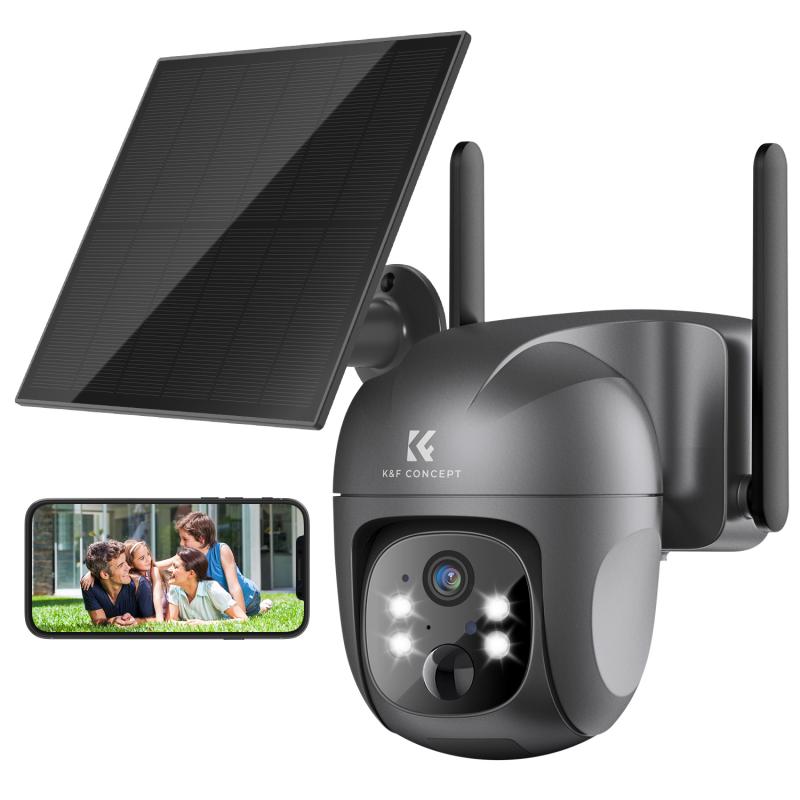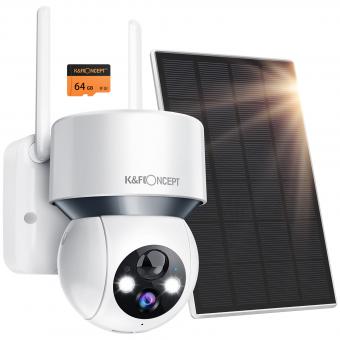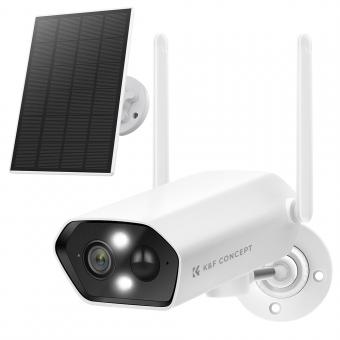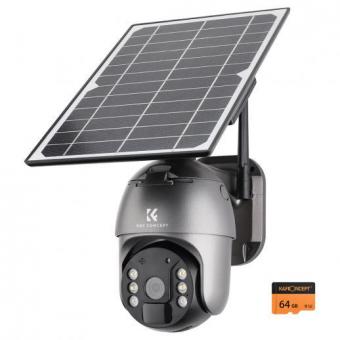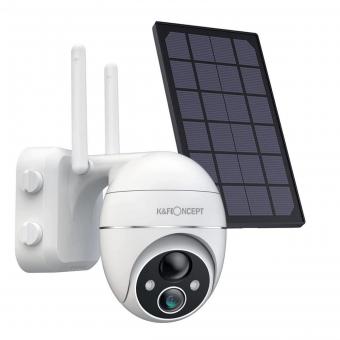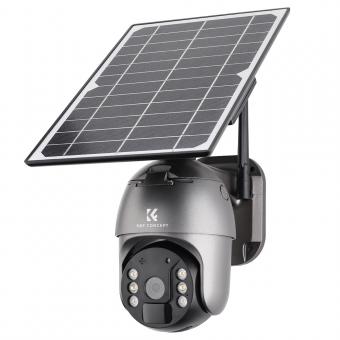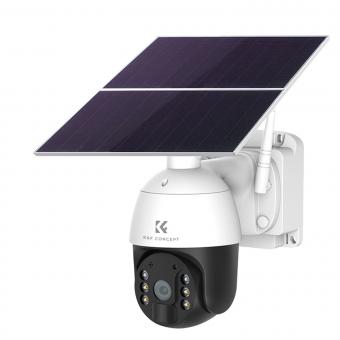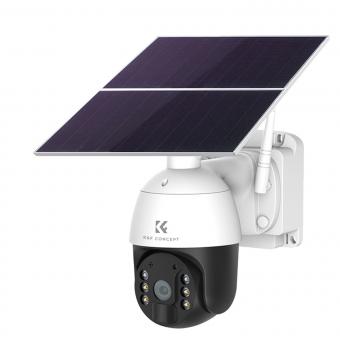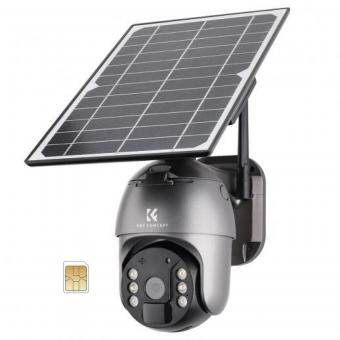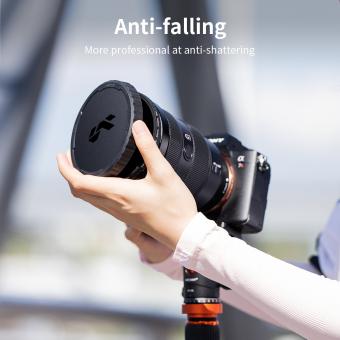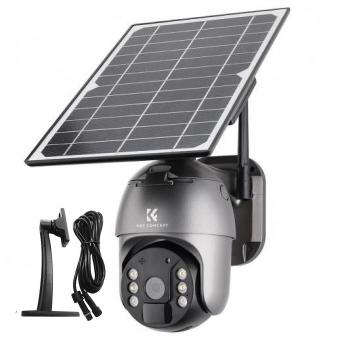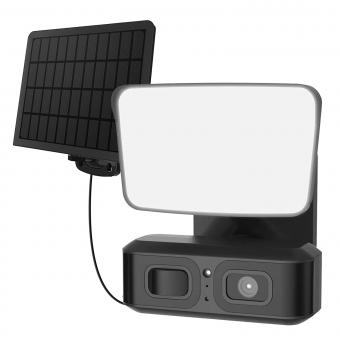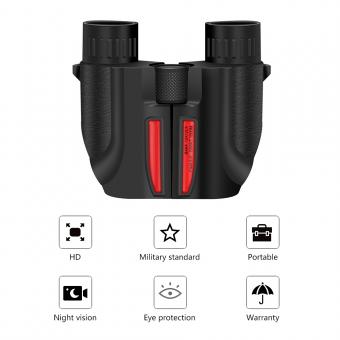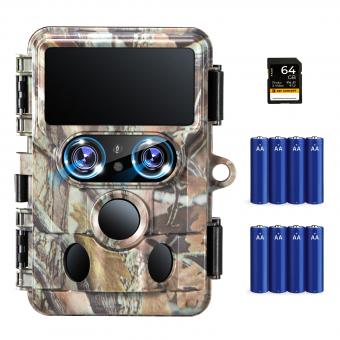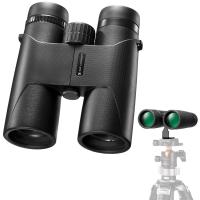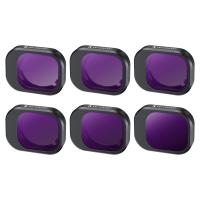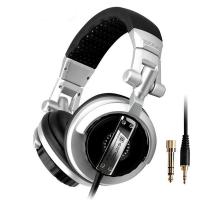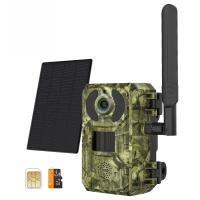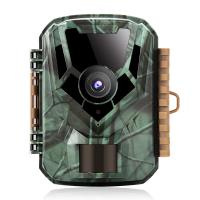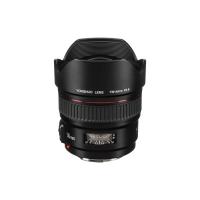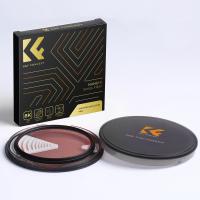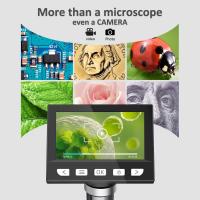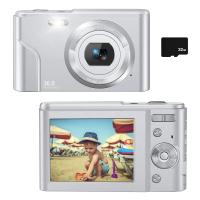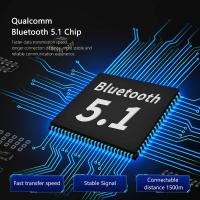Solar Can Camera ?
A solar can camera is a type of surveillance camera that is powered by solar energy. It typically consists of a camera, a solar panel, and a rechargeable battery. The solar panel collects energy from the sun and converts it into electricity, which is stored in the battery. This allows the camera to operate without the need for external power sources or wiring.
Solar can cameras are often used in remote locations where it is difficult or expensive to run power lines. They are also popular in outdoor settings where traditional wired cameras may be vulnerable to damage or theft. Solar can cameras can be used for a variety of purposes, including security surveillance, wildlife monitoring, and environmental research. They are typically weather-resistant and can be mounted on poles, trees, or other structures. Some models also come with motion sensors and remote viewing capabilities.
1、 Solar Energy
Solar Energy is a renewable source of energy that is derived from the sun's radiation. It is a clean and sustainable source of energy that has gained popularity in recent years due to its numerous benefits. One of the latest innovations in solar energy is the solar can camera.
A solar can camera is a device that uses solar energy to power a camera. It is a small, portable device that can be used to capture images and videos in remote locations where there is no access to electricity. The device is equipped with a solar panel that captures the sun's energy and converts it into electrical energy, which is then used to power the camera.
The solar can camera has numerous applications, including wildlife monitoring, security surveillance, and environmental monitoring. It is an eco-friendly alternative to traditional cameras that rely on batteries or electricity. The device is also cost-effective, as it eliminates the need for expensive batteries or electricity.
The use of solar energy is becoming increasingly popular due to its environmental and economic benefits. Solar energy is a clean and sustainable source of energy that does not produce harmful emissions or pollutants. It is also a cost-effective alternative to traditional sources of energy, such as fossil fuels.
In conclusion, the solar can camera is a testament to the innovative ways in which solar energy can be used. It is a small but powerful device that has numerous applications and benefits. As the world continues to shift towards renewable sources of energy, the use of solar energy is likely to become even more widespread.
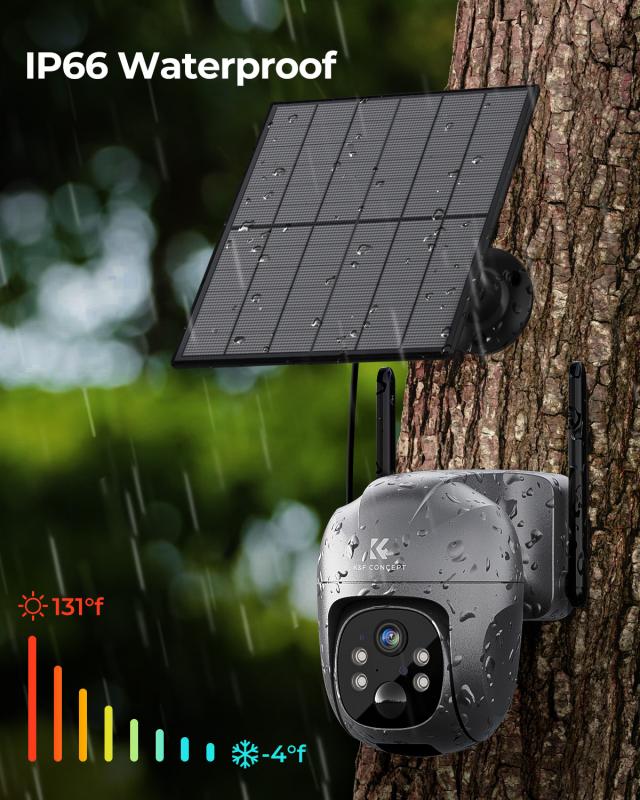
2、 Photovoltaic Cells
Photovoltaic cells, also known as solar cells, are devices that convert sunlight into electricity. They are made of semiconductor materials, such as silicon, and work by absorbing photons from the sun and releasing electrons, which can then be harnessed to generate electricity.
One of the most significant advantages of photovoltaic cells is that they are a clean and renewable source of energy. Unlike fossil fuels, which emit harmful pollutants when burned, solar cells produce no emissions or waste products. This makes them an attractive option for reducing greenhouse gas emissions and combating climate change.
Another advantage of photovoltaic cells is their versatility. They can be used in a wide range of applications, from powering small electronic devices like calculators and watches to providing electricity for homes and businesses. They can even be integrated into building materials, such as roofing tiles and windows, to generate power while also serving a functional purpose.
In recent years, there has been a growing interest in using photovoltaic cells for surveillance and security purposes. Solar-powered cameras, also known as solar can cameras, are becoming increasingly popular in remote locations where traditional power sources are not available. These cameras are equipped with photovoltaic cells that capture and store energy from the sun, allowing them to operate continuously without the need for external power sources.
Overall, photovoltaic cells offer a promising solution for meeting our energy needs in a sustainable and environmentally friendly way. As technology continues to improve and costs continue to decrease, we can expect to see even more widespread adoption of solar power in the years to come.

3、 Camera Technology
Solar can camera is a type of camera technology that utilizes solar power to operate. This technology is becoming increasingly popular due to its eco-friendliness and cost-effectiveness. The solar can camera is designed to capture high-quality images and videos, making it ideal for surveillance and security purposes.
One of the latest advancements in solar can camera technology is the integration of artificial intelligence (AI) and machine learning algorithms. This allows the camera to detect and recognize objects, people, and even animals, making it more efficient and accurate in detecting potential threats.
Another recent development in solar can camera technology is the use of 360-degree panoramic views. This allows the camera to capture a wider area, providing better coverage and reducing the need for multiple cameras. Additionally, some solar can cameras now come equipped with night vision capabilities, allowing them to capture clear images even in low-light conditions.
The use of solar can cameras is not limited to security and surveillance applications. They can also be used in wildlife monitoring, environmental research, and even in agriculture to monitor crop growth and detect pests.
Overall, solar can camera technology is a promising innovation that offers a sustainable and cost-effective solution for various applications. With the integration of AI and other advanced features, solar can cameras are becoming more efficient and accurate, making them an increasingly popular choice for businesses and individuals alike.

4、 Surveillance Systems
Surveillance systems have become an essential part of modern security measures, and the latest addition to this technology is the solar-powered camera. These cameras are designed to operate using solar energy, making them an eco-friendly and cost-effective solution for surveillance needs.
The solar-powered cameras are equipped with high-quality lenses and sensors that capture clear and detailed images, even in low-light conditions. They are also equipped with motion sensors that trigger the camera to start recording when there is any movement in the area. This feature helps to conserve energy and storage space by only recording when necessary.
One of the significant advantages of solar-powered cameras is that they can be installed in remote locations where there is no access to electricity. This makes them an ideal solution for monitoring large areas such as farms, forests, and construction sites. The cameras can also be used for temporary surveillance needs, such as during outdoor events or festivals.
Another advantage of solar-powered cameras is that they are easy to install and maintain. They do not require any wiring or electrical connections, which reduces installation costs and makes them more flexible in terms of placement. The cameras are also designed to withstand harsh weather conditions, making them durable and long-lasting.
In conclusion, solar-powered cameras are an innovative and practical solution for surveillance needs. They offer a cost-effective and eco-friendly alternative to traditional surveillance systems, and their flexibility and ease of installation make them an ideal choice for a wide range of applications.
